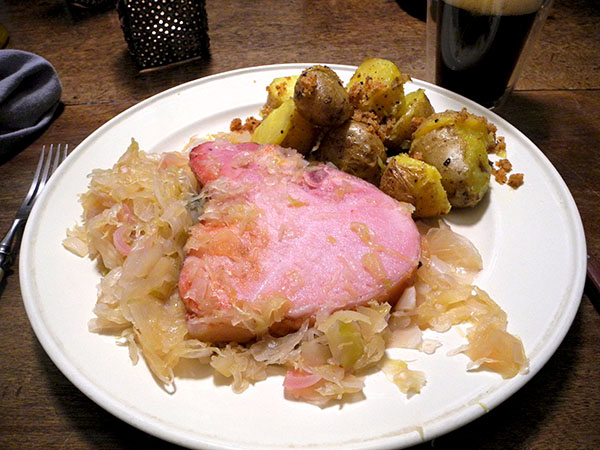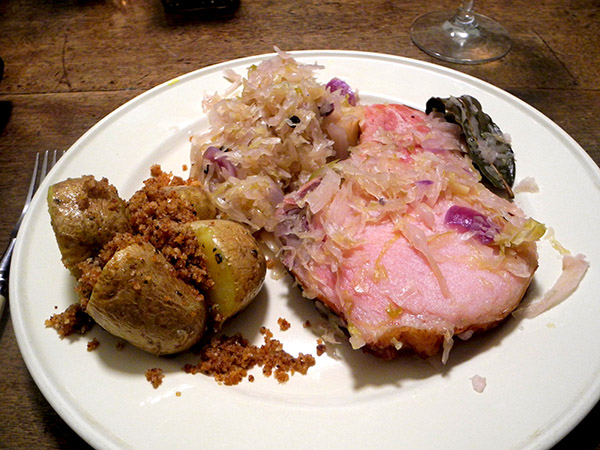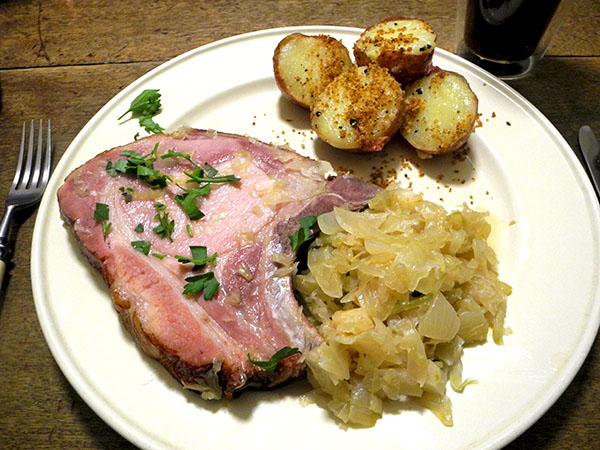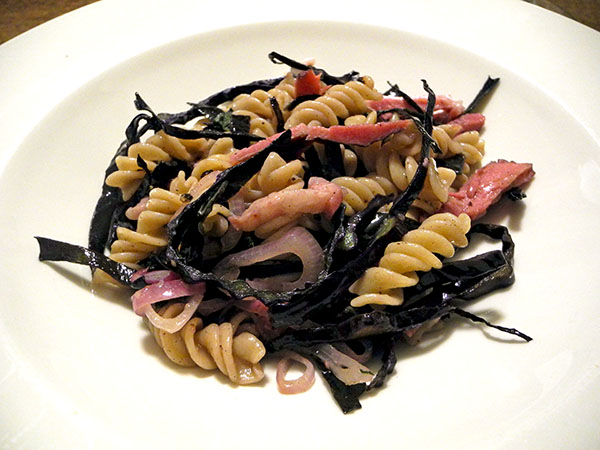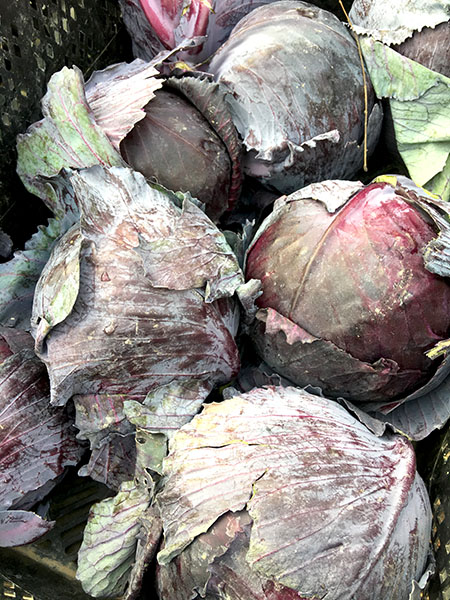
Is it still ‘Kassler‘ even when it’s not entirely German? I’ve made a working-executive decision: It is.
The only thing I worry about when I prepare a meal with smoke pork chops without heating them inside some Sauerkraut is whether they will be juicy. I’ve come up with the solution: keep them covered, and even the tiniest bit of liquid will do the trick.
They were definitely juicy last night.
And so were the vegetables.
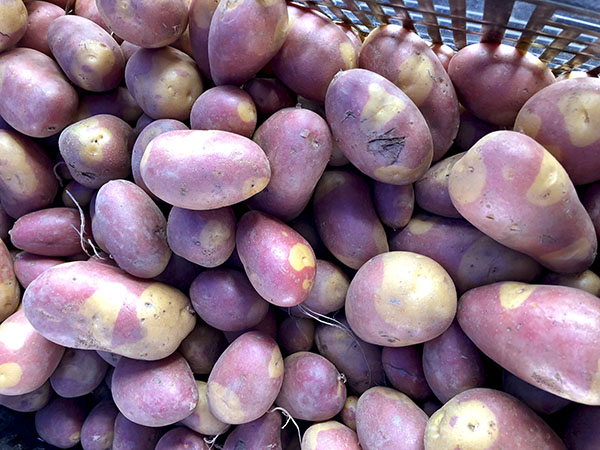
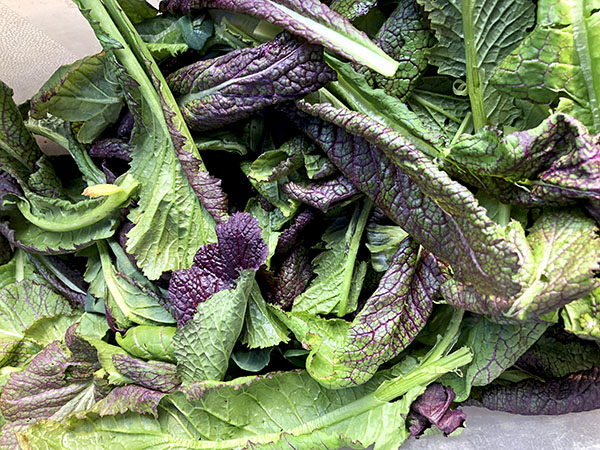
- a small amount of frozen rendered goose fat, the gift of a friend, that I had mixed with some juices from a dinner of which included squab bruschetta in which I had used it, heated inside a heavy, medium-size tin-lined copper skillet, where it had softened the chopped white sections of a scallion from Phillips Farms, the green section reserved for later, after which 2 smoked loin pork chops from Schaller & Weber were added, the pot covered with a universal copper lid, kept above a very low flame (just enough to warm the chops through, as they were already fully-cooked), turning the meat once, then, near the end of the cooking time (I went 8 minutes this time), the green parts of the onion, which had been set aside earlier, now also sliced, added for a minute or so, the pork removed, arranged on the plates, brushed with a little garlic oregano jam from Berkshire Berries, and sprinkled with both the white and green onion pieces
- red mustard from Norwich Meadows Farm, wilted in olive oil in which 3 cloves of Keith’s Farm Rocambole garlic had been gently sautéed until they had begun to brown, finished with sea salt, freshly-ground black pepper, and a drizzle of olive oil
- six ‘Pinto’ potatoes from Norwich Meadows Farm, scrubbed, boiled, unpeeled, in generously-salted water until barely cooked through, drained, halved, dried in the still-warm vintage Corning Pyrex Flameware blue-glass pot in which they had cooked, tossed there with 3 tablespoons of Organic Valley ‘Cultured Pasture Butter’ [12 grams of fat per 14 grams, or each tablespoon, of butter], seasoned with sea salt and freshly-ground black pepper, arranged on the plates, sprinkled with chopped parsley from Eataly, some toasted homemade breadcrumbs scattered on the top
- the wine was an excellent German (Pfalz) white, Becker Family Pinot Blanc, 2013, which our local purveyor at the time, Appellation Wines, was kind enough to special order for us when we asked them
- the music was Handel’s 1737 opera, ‘Berenice’, with Alan Curtis conducting Il Complesso Barocco
